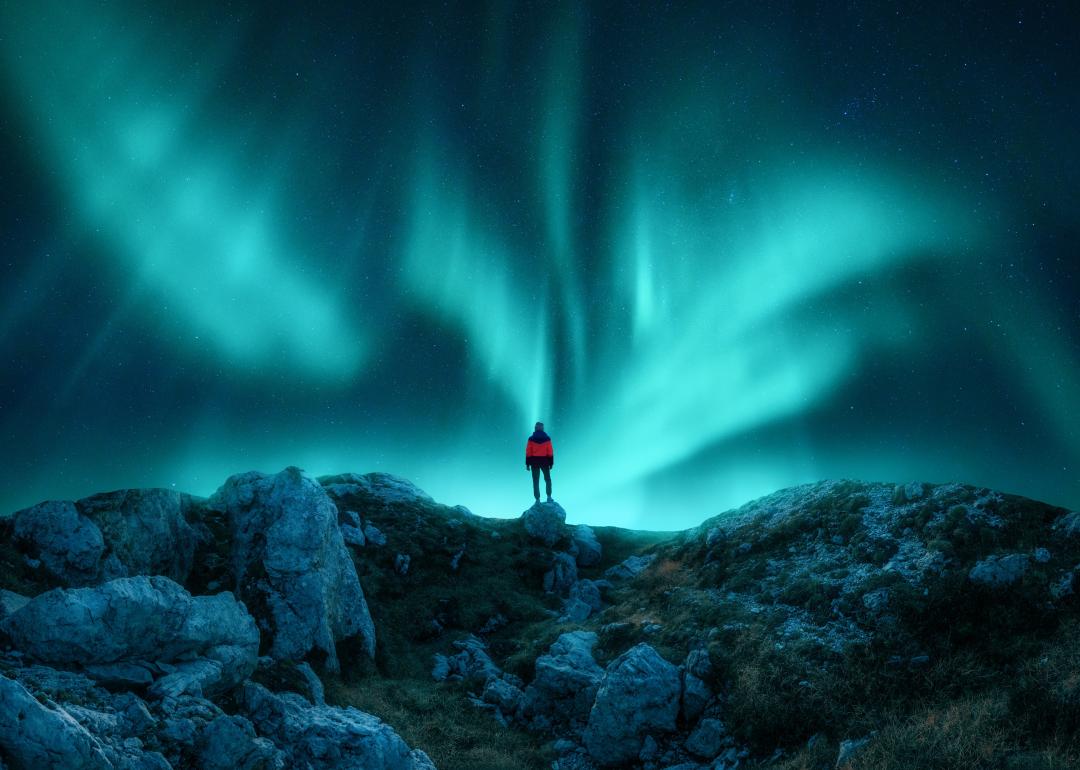
10 of the best places in the US to see the northern lights in 2024
10 of the best places in the US to see the northern lights in 2024
Astronomers predict this year will be the best in the last decade to see the northern lights. We have the sun's current solar cycle to thank for the stronger aurora borealis in 2024. Scientists say the sun is hitting its "solar maximum," or the highest activity rate during its current solar cycle, meaning more frequent and brighter northern lights. The sun's energized particles hit Earth's upper atmosphere, which then scatter toward its north and south poles. The redirected particles are what we see as the dancing hues of green, yellow, and magenta across the sky.
There are a few things you should do to plan before your trip. Winter is typically the best season to view the northern lights because of its longer, darker nights. It's possible to take a solo trip to see the lights, but many people recommend going in a group or on a guided tour for safety, especially if you're in an unfamiliar place.
Before venturing out into the cold, dark night, be sure to check an aurora forecast to understand what will likely happen in the sky. You'll need to venture away from any strong sources of light pollution like cities. Finally, get comfortable and be patient! Sometimes the aurora is only visible for a few minutes; sometimes it'll go on for hours.
If seeing the northern lights has been on your bucket list, now could be the best time to make it happen. Though Norway, Finland, and Iceland are the usual suspects when chasing northern lights, you don't have to travel outside of the United States to do it. Many of the country's northernmost states have dark skies that give a good chance for seeing the aurora borealis.
Stacker used various sources to create this list of 10 of the best destinations in the United States to view the northern lights.
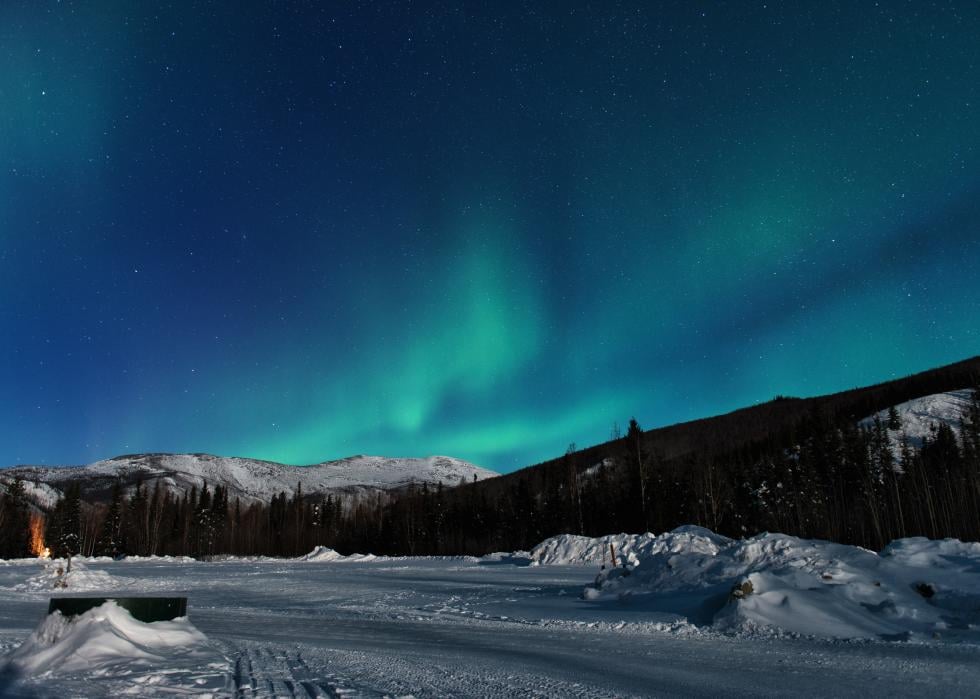
Fairbanks, Alaska
There are many reasons why Fairbanks, Alaska, is considered one of the best places in the world to view the northern lights. The most important reason is it's inside the "aurora oval," which sees a higher concentration of aurora lights. It also has many nights with clear skies.
Fairbanks is home to some of the world's best aurora forecasters at the Geophysical Institute of the University of Alaska Fairbanks. The season for viewing the lights in Fairbanks is from Aug. 21 to April 21. During that time frame, late August through early September usually have the best chances for viewing the aurora borealis while enjoying summer activities.
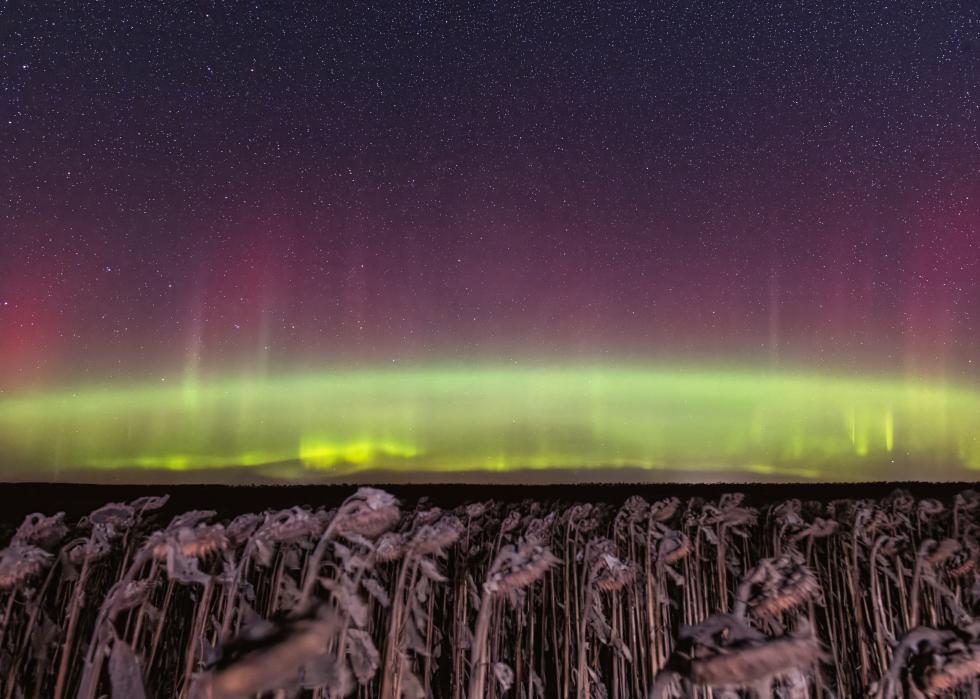
New Town, North Dakota
The nice thing about North Dakota is that if the aurora borealis is going to show up here, it will likely be visible across the entire state. The only things you'll need to ensure are clear skies and a low-light moon because sometimes a radiant moon can make the sky too bright to see the faint glow of the northern lights.
If you're looking for a nice vantage point to take in the night sky, Crow Flies High State Recreation Area near New Town, North Dakota, in the western part of the state, is an ideal place. The scenic stop overlooks Lake Sakakawea and gives an unobstructed view of the night sky. You could also chase the northern lights inside Theodore Roosevelt National Park near Medora, North Dakota.
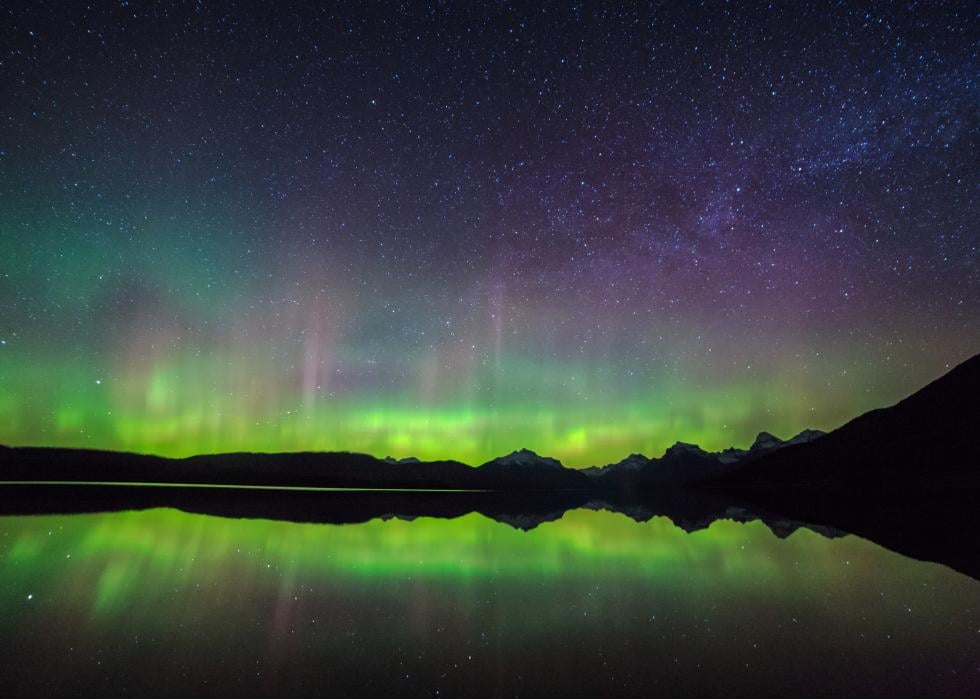
Glacier National Park, Montana
Glacier National Park in northwestern Montana's Rocky Mountains puts travelers just south of the U.S.-Canada border. It's a certified International Dark Sky Park, so light pollution won't get in the way of viewing the aurora. The national park has many ideal lookout locations, such as Lake McDonald, a popular destination for kayaking during the day. For those who prefer a less remote viewing party, The Northern Lights Saloon in nearby Polebridge, Montana, offers live music while you skywatch.
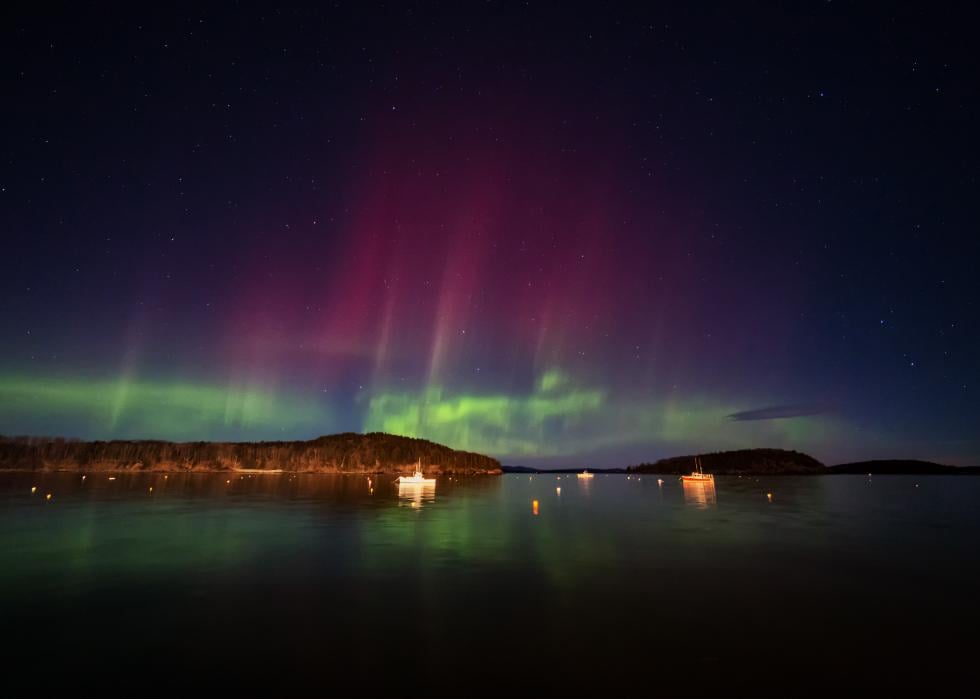
Aroostook County, Maine
The earliest written account of seeing the northern lights in Maine dates back to 1719. It described the colorful display as both dreadful and indescribable. Today, the aurora borealis still leaves people breathless, but thankfully they seem to enjoy it more than those who viewed it more than 300 years ago.
Aroostook County, Maine's northernmost county bordered by Canada, is one of the best places on the U.S. east coast to try to catch the northern lights. It has some of the darkest skies east of the Mississippi. Visit in September or October to ensure the dark skies are clear of clouds. For those who like to gaze at other natural wonders, the Aroostook National Wildlife Refuge is also a great place to birdwatch and spot other wildlife.
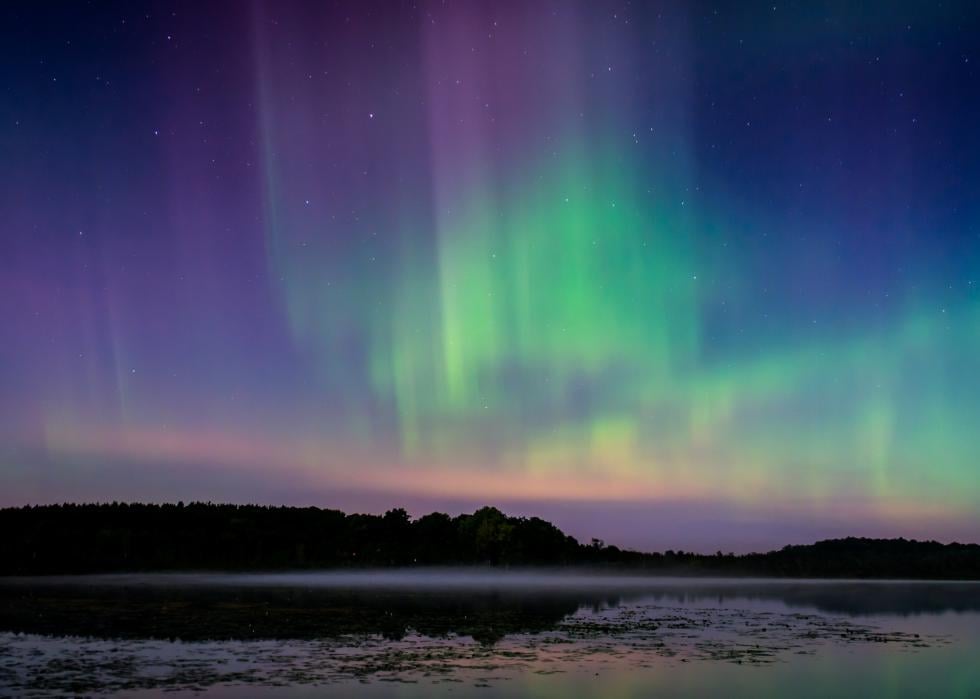
Newport State Park, Wisconsin
Nearly two hours from Green Bay, Wisconsin, the state's only dark-sky park sits on the edge of the Door peninsula. Late December through early March bring the best chances to see the aurora borealis during high auroral activity. Being on the shore of Lake Michigan gives viewers a better, unobstructed view of the northern horizon, which is important in catching the northern lights from the lower 48. People can also use the National Oceanic and Atmospheric Administration's aurora forecast tool to get a 30-minute heads-up on whether the northern lights will be visible near their position in northern Michigan.
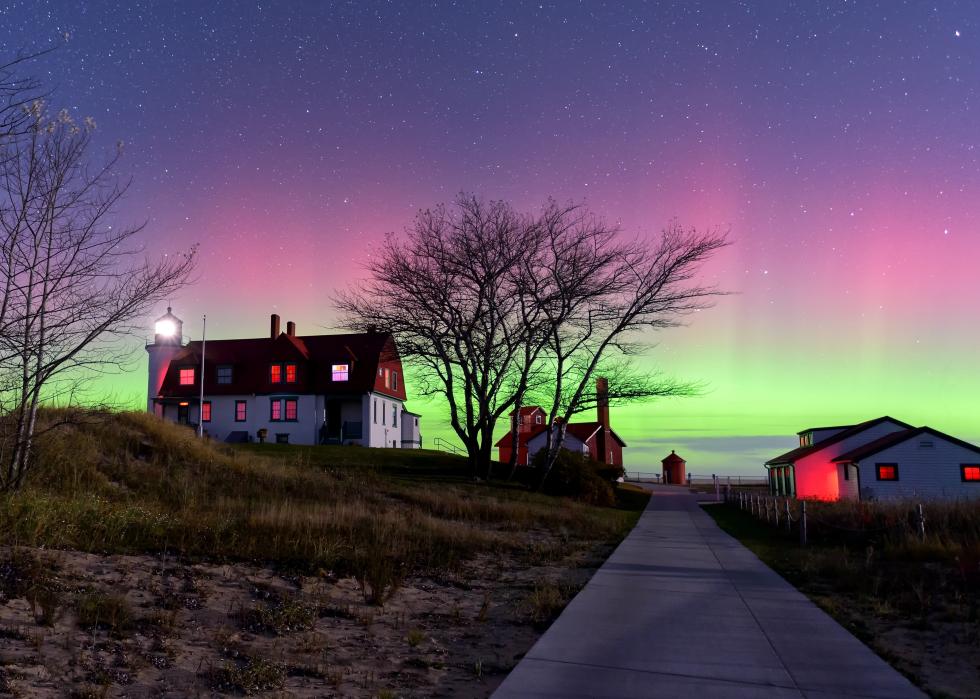
Upper Peninsula of Michigan
North of Wisconsin's Door peninsula is Michigan's Upper Peninsula, another ideal place to see the northern lights. The remote peninsula has hundreds of miles of shoreline along Lake Superior, making it easy to view the sky. If you find yourself in Michigan's Lower Peninsula instead, Port Crescent State Park and the Headlands International Dark Sky Park are good options. October, November, and April are the best months to see the aurora borealis in Michigan, although viewers have spotted it earlier in the fall and spring.
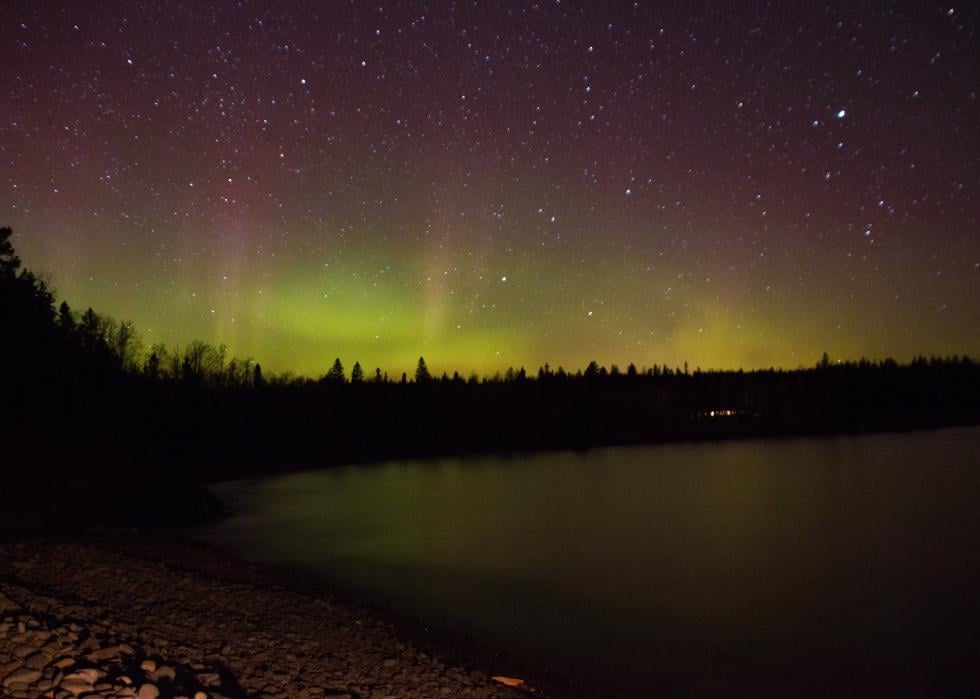
Duluth, Minnesota
It's safe to say spots all along Lake Superior are great for viewing the aurora in the lower 48 because Duluth, Minnesota, is another place that gives visitors a good chance to see the northern lights.
Duluth is to the west of Wisconsin's and Michigan's viewing areas but sits at roughly the same latitude, which means chances for seeing the northern lights go up when there's increased solar activity. Duluth has prime places to see the northern lights, including Hawk Ridge, White Sky Rock, and Little Stone Lake.
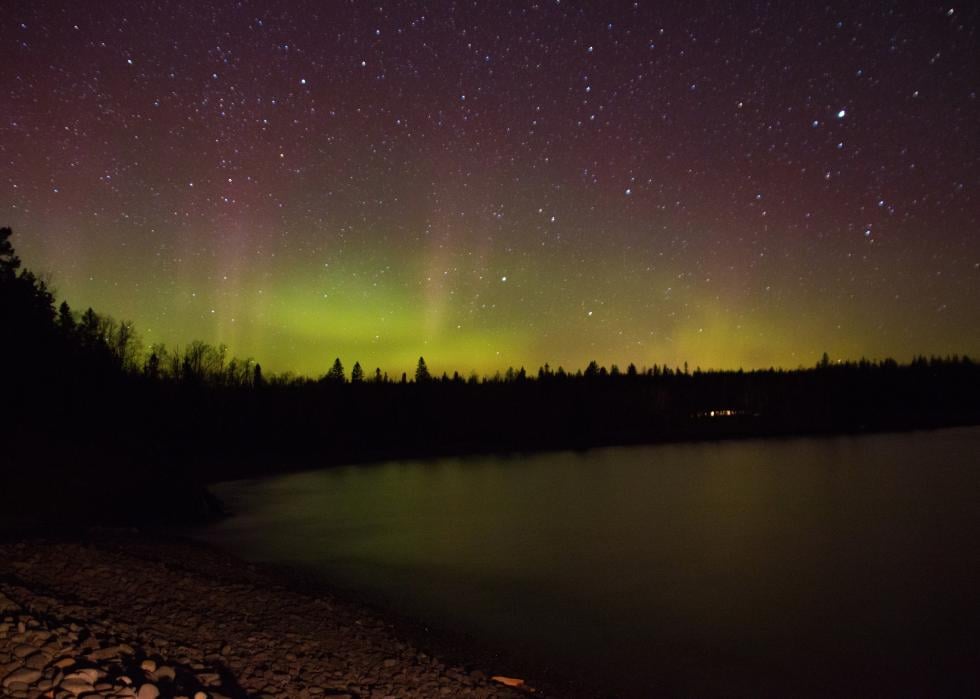
Idaho Panhandle National Forests
Go to the northernmost tip of Idaho for your best chance at capturing a glimpse of the aurora borealis. About 120 miles from Spokane, Washington, the Idaho Panhandle National Forests—which also cover small regions of eastern Washington and western Montana—are also a camper's and hiker's paradise. Check out Priest Lake for one of the best vantage points in the state. Add to the beauty of the lights by watching them both in the sky and their reflection on the lake.
If you'd prefer to stay a little further south, Heyburn State Park near Chatcolet Lake is also a great place for chasing the northern lights. Opt for a spot along the Trail of the Coeur d'Alenes' bridge on the lake.
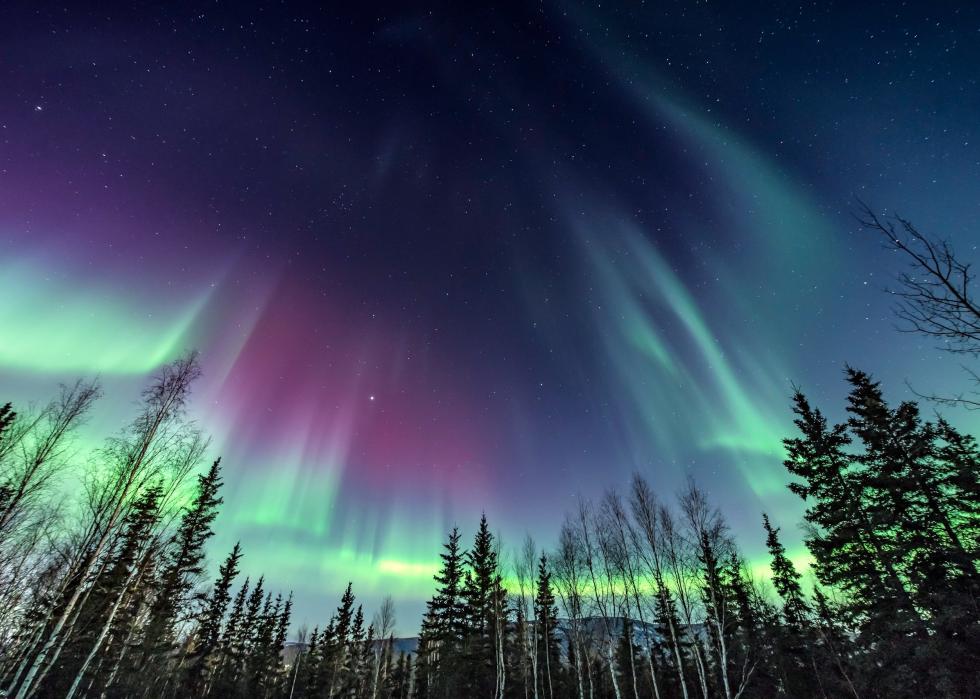
Utqiaġvik, Alaska
The northern lights are visible across most of Alaska. Still, those looking for a more adventurous journey may consider traveling to Utqiaġvik, the most northern community in the U.S. During the winter months, the sun sets on Utqiaġvik on Nov. 17. It doesn't rise again until Jan. 24, giving the small town 67 days of darkness, with only a little bit of sunlight shining on the horizon. That little bit of twilight means northern lights chasers will still need to wait for the night hours to see the celestial phenomenon. The aurora borealis typically isn't as strong in Utqiaġvik compared to Fairbanks since this small northern Alaska town is at the edge of the zone that tends to get visible lights.
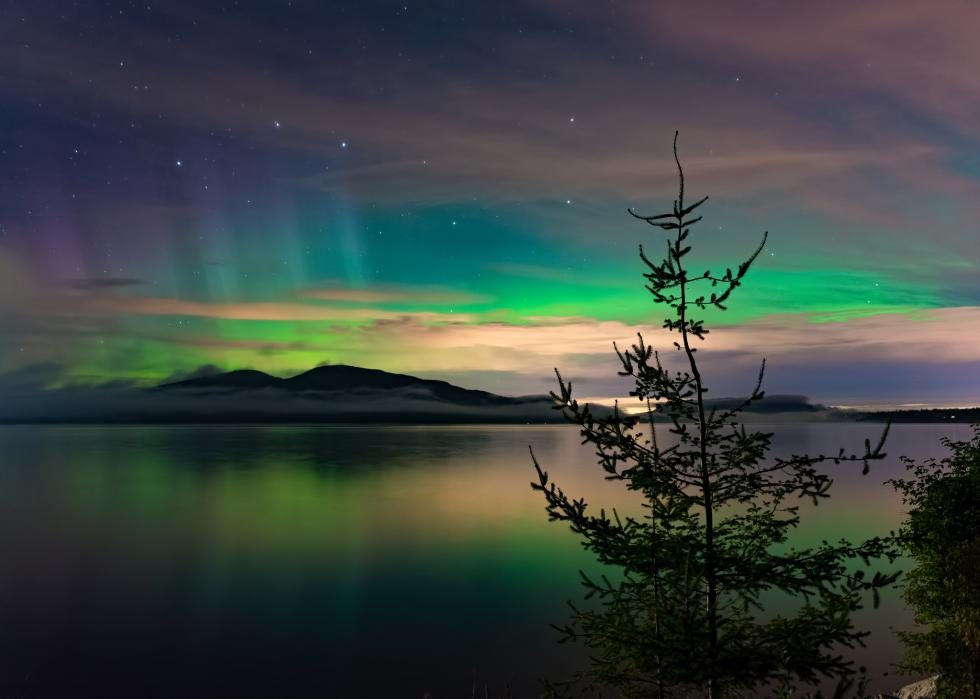
San Juan Islands, Washington
The archipelago off the northwest coast of Washington State is known for many things: ferry rides, uncrowded beaches, and world-class whale watching. Stargazing may not be at the top of visitors' lists, but it should be, especially during the solar maximum. The islands have low light pollution and get more than 247 days of clear skies, giving it the perfect combination for viewing the northern lights. There's usually increased aurora activity in September and March, although there are several local reports of catching the northern lights year-round, including in midsummer.
Story editing by Carren Jao. Copy editing by Paris Close. Photo selection by Clarese Moller.



